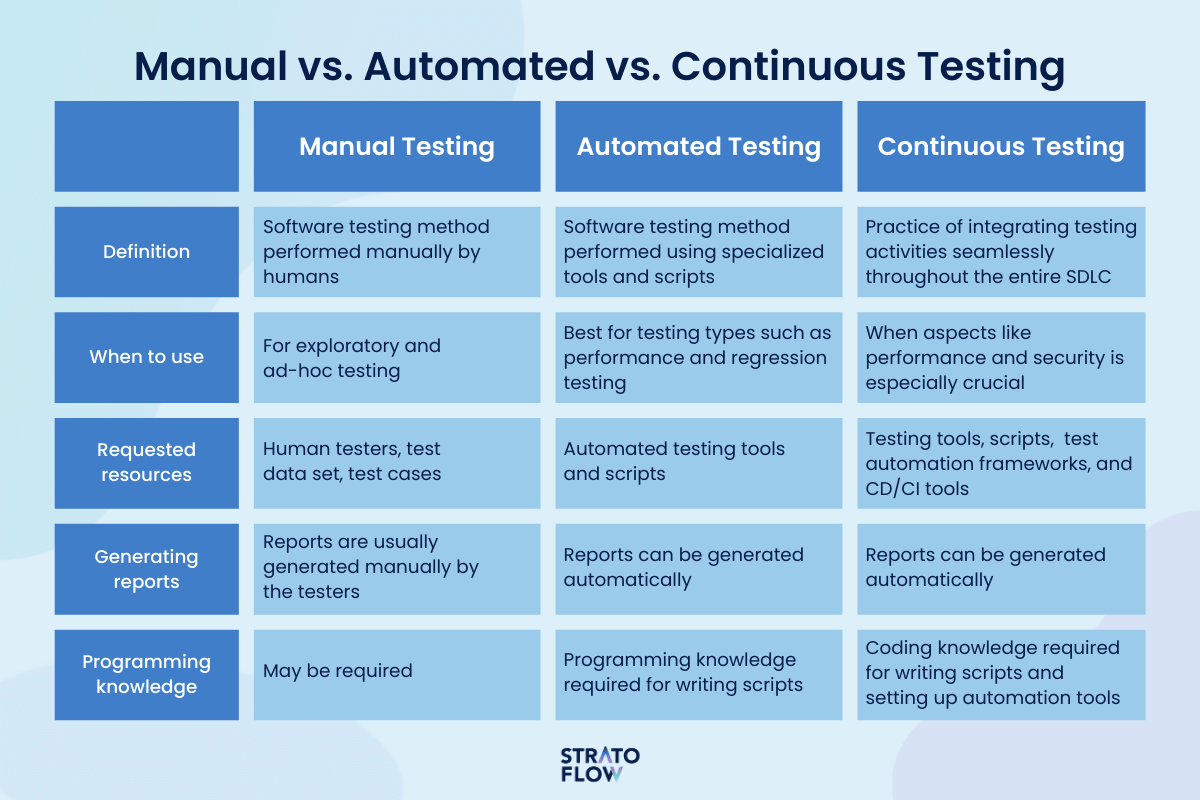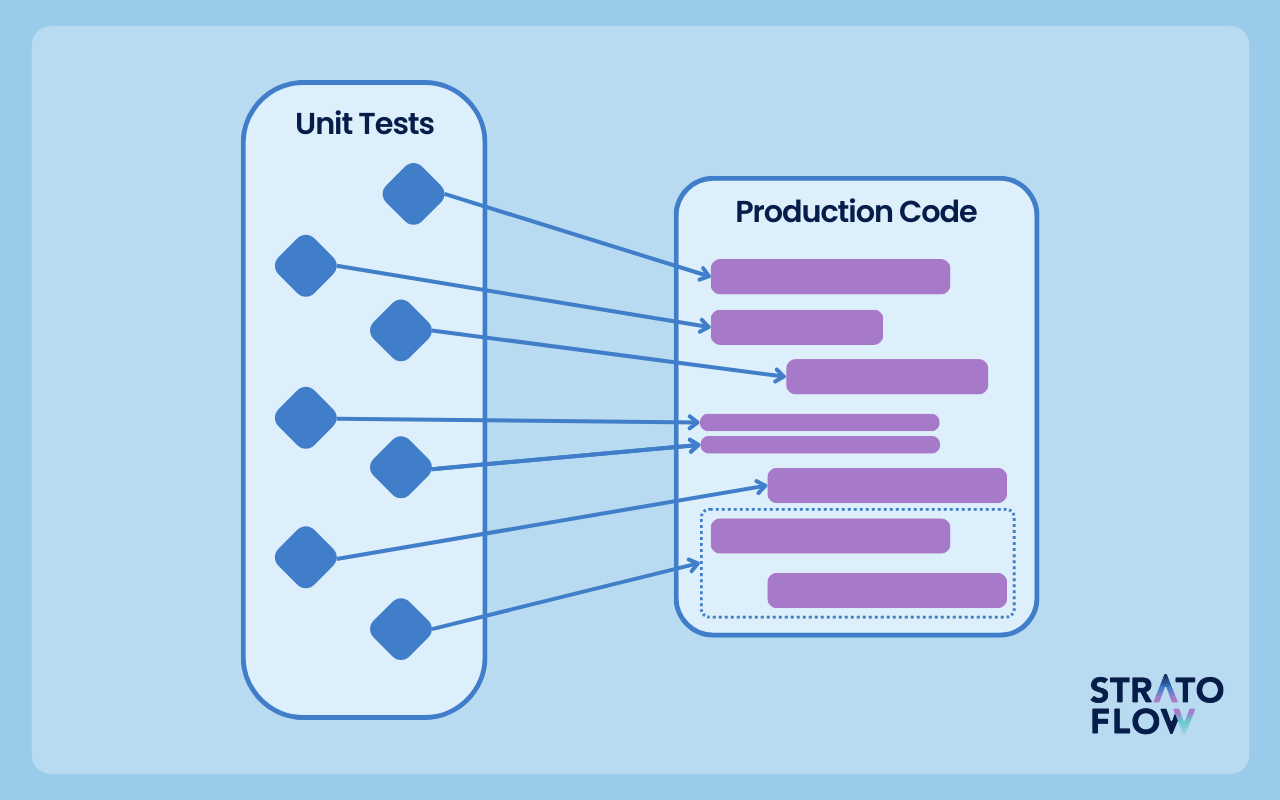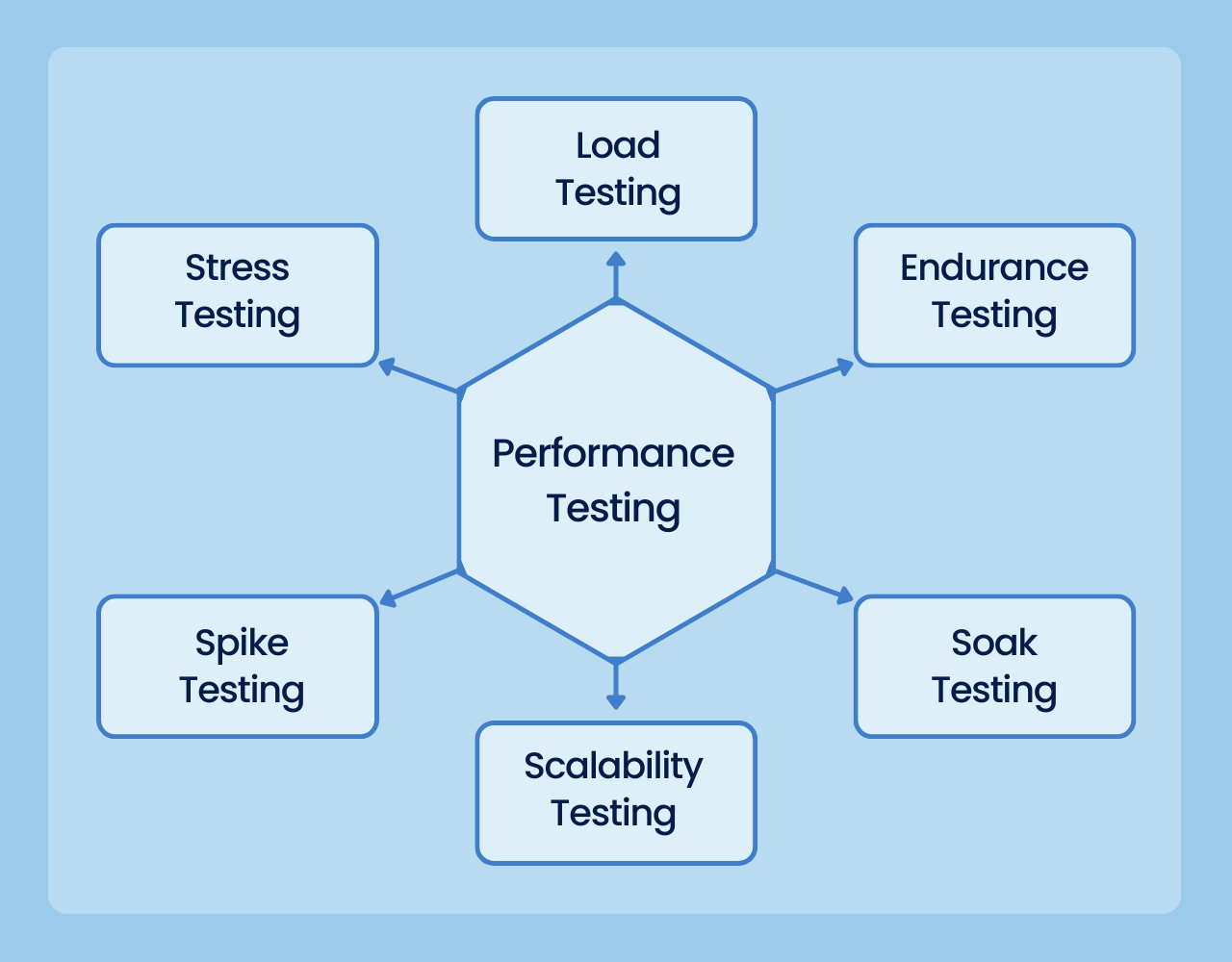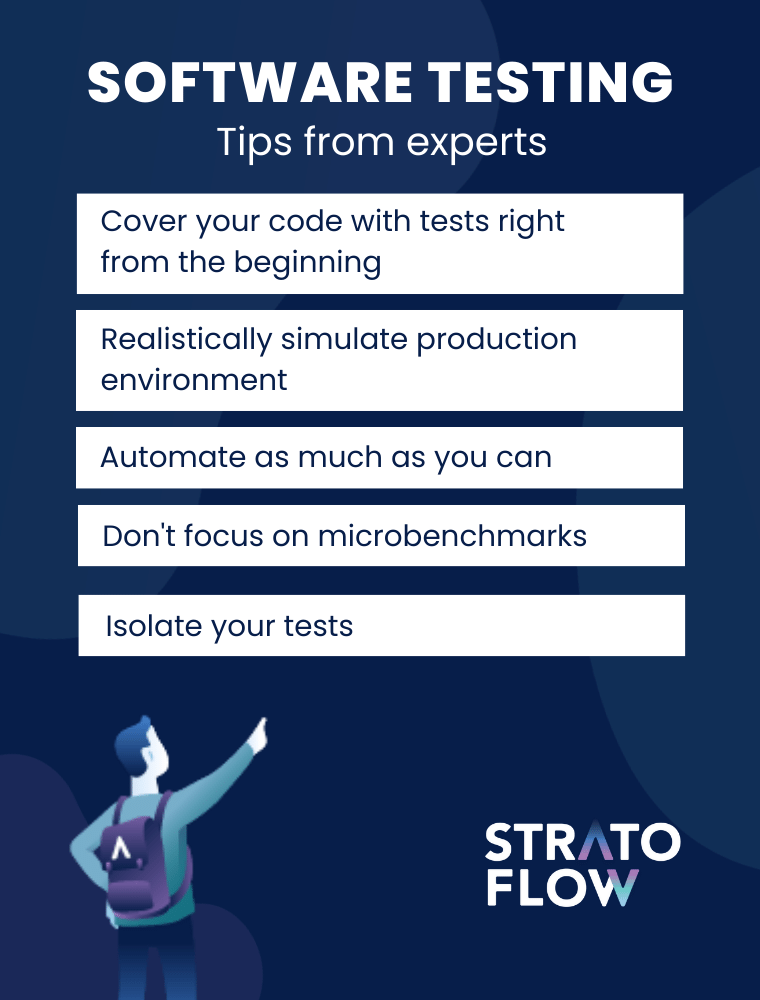
SDLC Guide: Key Steps of Software Testing Process
Have you ever wondered how software developers ensure that the applications you use every day are reliable and bug-free?
The answer lies in the process of software testing – a critical phase in the Software Development Life Cycle (SDLC).
In this article we are going to examine the various stages of software testing, from initial planning to execution and reporting. We will show you the different types and approaches to testing, each of which plays a critical role in refining and validating software to ensure it meets the highest standards of quality and functionality before it reaches users.
What is software testing?
Software testing is an important stage in the software development process during which software developers test software to ensure that it works properly.
This process involves running the software under controlled conditions to verify that it behaves as expected, meets the specified requirements, and ensures quality.
The primary goal of software testing is to identify defects, gaps, or any inconsistencies between the existing and desired conditions in the software. It includes various methods and levels, such as unit testing, integration testing, system testing, and acceptance testing, each of which addresses specific aspects of the software.
It’s like giving the software a test run to find any bugs or problems before it’s used for real tasks. This testing helps ensure that the software does exactly what it’s supposed to do, without errors or problems.
[Read also: SDLC Guide: Requirement Analysis in Software Engineering]
Coding and testing: two inseparable elements of SDLC
In the software development process, the development and testing phases are linked together and mutually beneficial, forming a complementary relationship that is critical to producing high-quality software.
During the development phase and design phase, software engineers design, write, and assemble the code to create a working application.
By integrating testing early and continuously throughout the development cycle, potential problems can be identified and addressed earlier, reducing the cost and time of fixing them later.
This collaboration between development and testing teams improves the overall quality of the software by providing immediate feedback and iterative improvements.
Why is software testing process so important?
As we’ve already said, software testing as it plays a critical role in ensuring the quality, reliability, and performance of the software product.
Software testing helps identify bugs and errors that could cause failures, preventing costly problems after deployment.
It also ensures that the software meets user requirements and expectations, which increases customer satisfaction and keeps software projects on track.
Types of software testing
Software testing encompas a wide range of types of software testing, each designed to meet specific objectives and address different aspects of the software.
The variety of test types is important because it ensures a thorough evaluation of the software’s 3 key aspects: functionality, reliability, and usability from different perspectives.
To make this clearer, we’ve created an infographic that breaks down software testing into 4 levels.

Let’s start with functional and non-functional tests as they are two main categories. Functional testing tests the specific actions and features of the software, while non-functional testing evaluates overall performance, usability, and reliability.
But there are also three different ways to perform software testing – these are on the first level of our diagram.
- Manual testing involves human testers performing tests manually without the aid of automation tools, focusing on exploring and evaluating the software’s features and functionalities.
- Automated testing uses software tools to run tests repeatedly and quickly, providing an efficient way to check for defects, especially in large and complex systems.
- Continuous testing integrates testing into every phase of the software development lifecycle, providing continuous quality assurance and rapid feedback on potential problems.

Let’s take a closer look at these lower levels of our diagram and talk briefly about all the different types of functional and non-functional software testing:
Unit testing
Unit testing, a fundamental practice in software development, involves testing individual units or components of a software application in isolation.
A unit is the smallest testable part of a piece of software and typically has one or a few inputs and usually a single output. Unit testing is critical because it helps identify and fix bugs early in the development cycle, reducing cost and time to market. It also ensures higher product quality, which is essential for maintaining customer satisfaction and trust.

Common unit tests may include:
- Data flow testing,
- Branch coverage testing,
- Control flow testing,
- Statement Coverage Testing.
Integration testing
Integration testing is another critical subtype of functional testing in software development that focuses on testing software application’s components and how they interact with one another.
The primary objective of this testing is to identify issues that occur when units are combined and interact with each other.
System integration testing step is essential in the development process, particularly for complex systems where different modules or services must work together seamlessly. In a business context, integration testing is vital for ensuring that the integrated components function correctly and meet the business requirements.
[Read also: Off the Shelf vs Custom Software: Pros & Cons + Examples]
User acceptance testing
User Acceptance Testing (UAT) is a critical phase in the software development process where end users test the software to verify that it performs the required tasks in real-world scenarios according to the specifications.
Within UAT, there are two main subtypes: alpha and beta testing.

- Alpha Testing: Conducted by internal staff, often in a controlled environment, to identify bugs and issues before the software is released to external users.
- Beta Testing: Involves distributing the software to a group of external users to test in real-world conditions. This phase collects feedback on the software’s performance and user experience, which is crucial for making final adjustments before the official market release.
Performance testing
Now let’s move on to non-functional testing with the first type – performance testing.
In this type of software testing, the testing team focuses on evaluating the speed, responsiveness, and stability of a software application under various conditions.
This type of testing is essential to ensure that the software performs well in terms of speed and handling under expected workload scenarios. It enables companies resolve problems related to response times, low latency, throughput, and resource usage. By proactively addressing performance issues, organizations can increase user satisfaction, reduce downtime, and improve customer retention. It doesn’t matter if you are developing a robust enterprise software accounting system, a metasearch travel engine, or a custom search engine, software performance is critical to all of these projects in all branches of business.

Subtypes of performance testing include:
- Stress Testing: Determines how the software behaves under extreme workloads, testing its limits and identifying its breaking point.
- Load Testing: Evaluates the software’s performance under expected user loads to ensure it can handle anticipated traffic without degradation of performance.
- Endurance Testing: Checks the software’s ability to sustain the expected load over an extended period, ensuring reliability over time.
- Spike Testing: Assesses the software’s reaction to sudden large spikes in user load, such as a surge in web traffic, to ensure it can handle abrupt changes in demand.
- Soak Testing: Involves testing the software under a significant load extended over a long duration to identify issues like memory leaks.
- Scalability Testing: Determines the software’s effectiveness in scaling up or down in response to varying loads, ensuring it can adapt to growth and change in user demand.
Security testing
Security testing, another important component of non-functional testing in software development, focuses on identifying vulnerabilities, threats, and risks in a software application to prevent malicious attacks.
In today’s digital age, where cyber threats are increasingly sophisticated and pervasive, security in soiftware development has become more important than ever.
For SaaS and web applications, there are continuous security scanning tools such as Scanrepeat that provide continuous monitoring and immediate detection of security vulnerabilities, helping to maintain the integrity and trustworthiness of the software over time.
There are two general types of security testing:
- Penetration Testing: Simulates an attack from a malicious hacker to identify and exploit weaknesses in the software’s security, revealing how well the system can defend against real-life attacks.
- Vulnerability Testing: Involves systematically scanning the software to identify known vulnerabilities, such as unpatched flaws or outdated software components, ensuring that these weaknesses are addressed proactively.
Compatibility testing
Now, let’s briefly describe the last type of software testing we’ll talk about in this article – compatibility testing.
It focuses on evaluating whether a software application or product works as intended across different browsers, databases, hardware, operating systems, mobile devices, and networks. The primary goal is to ensure that the software is compatible with different environments and configurations, which is critical in today’s diverse technology landscape.
Key steps of software testing process
let’s now delve into the intricate stages of the software testing process.
From the preliminary assessment to the detailed execution and final analysis, each step is crucial.
Here, we break down these stages of the software testing process, providing clarity on how they collectively ensure the delivery of high-quality, reliable software.

Step 1: Assess the Development Plan and Status
This initial step involves understanding the overall development plan, project scope, and current status.
It’s about getting a clear picture of what has been developed, what functionality needs to be tested, and aligning testing goals with development goals.
Step 2: Develop the Test Plan
The second step involves strategizing the testing process just like we did with the entire development project during the software development planning stage.
This includes defining the scope of testing, selecting testing methodologies and tools, outlining the test plan, and allocating resources. The test plan acts as a roadmap for testing activities, ensuring that the testing effort is organized and efficient.
Step 3: Create Test Cases
In this phase, testers develop specific test cases based on the requirements and objectives outlined in the test plan.
Test cases are detailed instructions that describe what needs to be tested, how to test it, and the expected results. This step is crucial for ensuring that all aspects of the software are thoroughly tested.
Step 4: Setup Test Environment
Setting up the test environment involves preparing the hardware and software necessary for executing the test cases.
This environment should mimic the production environment to accurately assess how the software performs under real-world conditions.
Step 5: Execute Your Tests
Now comes the time for execution of the tests themeselves.
Testers run the software through the developed test cases, observe its behavior and performance, and record the outcomes. Any deviations from the expected results are logged as defects for further investigation.
Step 6: Report Test Results
After testing is complete, the results are compiled into a report.
This report details the testing process, the defects found, and an assessment of the software’s quality. It is a crucial document that informs stakeholders about the state of the software and any risks associated with its release.
Software testing – Tips from experts
Software testing is a nuanced field, and developers like to come up with their own strategies to better integrate it into the development cycle.
That’s why we asked our senior developers to share some tips on test execution strategies and best practices.
Here is what they had to say:

Cover your code with tests right from the beginning
Start writing tests as soon as you start coding.
Early testing helps catch bugs when they’re easier and less expensive to fix. It also encourages you to write more testable, and therefore more structured, code. Think of tests as a safety net that grows with your codebase, ensuring that each new feature or function works as intended and continues to work as the system evolves.
Realistically simulate production environment
For software testing to yield tangible results, it is important to run it on data sets and hardware that are as close to production as possible.
Especially in the case of enterprise software, it is sometimes difficult to get information about the expected “shape and size” of the data that the system will have to deal with in production. It is very important to discuss these criteria with the customer in advance in order to properly set up the test environment.
Automate as much as you can
There’s this popular saying: work smart, not hard.
In the case of software development that means that test automation is the key to efficient software testing.
Automated tests save time, reduce human error, and can be run frequently. Focus on automating repetitive tasks, regression tests, and other time-consuming tests that are run frequently.
Keep in mind, however, that not everything can or should be automated; some scenarios still require the nuanced judgment of manual testing.
Don’t focus on microbenchmarks
While performance testing is important, avoid getting bogged down in micro-optimizations at the expense of overall system performance.
It’s easy to fall into the trap of optimizing small pieces of code for performance gains that don’t have a significant impact on the overall application. You might spend hours tweaking a piece of code that improves the performance of the software by a tiny margin when your time could have been spent more efficiently elsewhere.
Instead of focusing on microbenchmarks, focus on profiling and optimizing areas that will have a meaningful impact on the application’s performance.
Isolate your tests
If you have been reading about multitenant software architecture, you should not be a stranger to the concept of a noisy neighbor problem.
A similar thing can happen when conducting software tests. Performance testing capabilities can be negatively affected if the tests are run on the same hardware with other processes in the background.
Next step of the software development life cycle
After the software testing phase, the next critical step in the software development lifecycle is deployment.
Deployment is the process of making the software available for use, typically by transferring it from the development environment to the production environment.
Deployment is a critical step because it marks the transition of the software from a development phase to being operational and available to end users, but we will look at this stage in more detail in the next installment of our series on the SDLC. Stay tuned!
Conclusion
In summary, the software testing process, as an integral part of the Software Development Life Cycle (SDLC), plays a critical role in ensuring the delivery of high quality software products.
Through a variety of testing methodologies, from unit testing to acceptance testing, and with approaches ranging from manual to automated testing, developers can effectively identify and resolve issues, thereby improving the reliability and performance of the software.
Related Posts
- Online Shopping Recommendations – How to Introduce Them in Your Business?
- Amazon Product Recommendation System: How Does Amazon’s Algorithm Work?
- Movie Recommendation System: How It Works And How To Introduce It In Your Business
- Your Guide to Property Management Software Development
- SDLC Guide: Best Strategies and Practices for Successful Software Deployment Phase
Thank you for taking the time to read our blog post!
